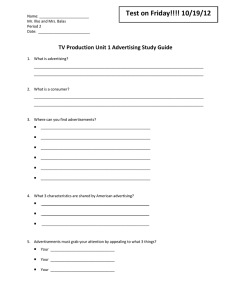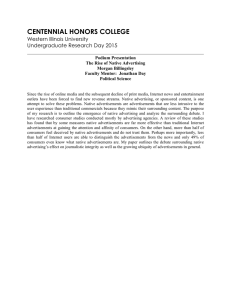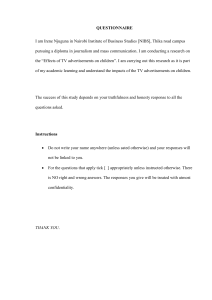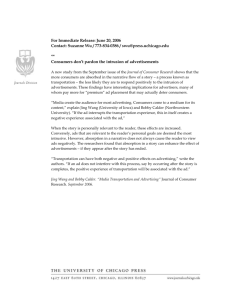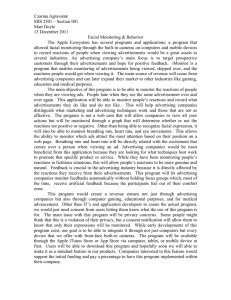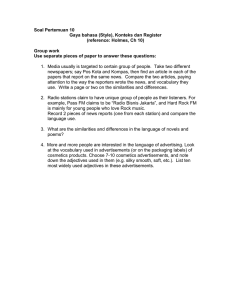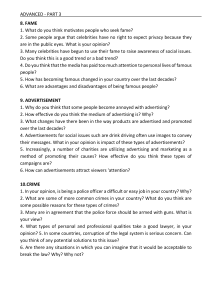Xtu - ryansmithefolio2
advertisement
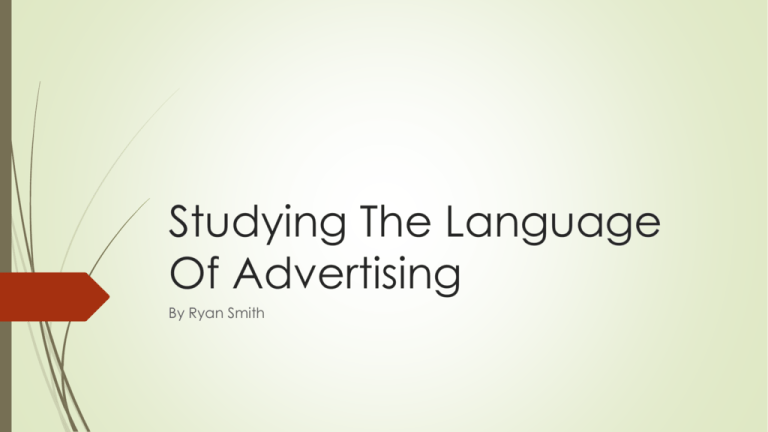
Studying The Language Of Advertising By Ryan Smith Some Quick info “Obesity among all young people has more than quadrupled over the past four decades — from just 5 percent among 6-to-19-year-olds in the 1960s to 19.6 percent in 2008.” “A white boy born in the year 2000 has a 26.7 percent risk of being diagnosed with diabetes in his lifetime — quite high — but a black girl born the same year has nearly double that risk.” “African-American youth, for example, see 80 to 90 percent more ads for sugary drinks than white children do” Fast Food companies spend roughly 2 billion per year on youth advertising, and market directly to African American and Latino youth. 600-625 potential exposures (whether noticed or not); 272 are from TV, radio, magazines and newspapers. Source: http://america.aljazeera.com/opinions/2014/5/junk-food-targetmarketingblacklatinoyouth.html https://ams.aaaa.org/eweb/upload/faqs/adexposures.pdf http://www.readwritethink.org/classroom-resources/lesson-plans/identifyingunderstanding-fallacies-used-785.html?tab=4#tabs Rhetorical Devices used in advertising. Ad hominem (meaning "against the person")—attacks the person and not the issue 2. Appeal to emotions—manipulates people's emotions in order to get their attention away from an important issue 3. Bandwagon—creates the impression that everybody is doing it and so should you 4. False dilemma—limits the possible choices to avoid consideration of another choice 5. Appeal to the people—uses the views of the majority as a persuasive device 6. Scare tactic—creates fear in people as evidence to support a claim 7. False cause—wrongly assumes a cause and effect relationship 8. Hasty generalization (or jumping to conclusions)—draws a conclusion about a population based on a small sample 9. 10.Traditional wisdom—uses the logic that the way things used to be is better than they are now, ignoring any problems of the past Red herring—presents an irrelevant topic to divert attention away from the original issue http://birthmoviesdeath.com/2013/05/01/watch-the-mountain-dewcommercial-that-has-pissed-everybody-off Why Should We Learn This? Advertisements target you (yes YOU) directly! Because of this, it is important for you to be able to recognize when advertisements are trying to persuade you into buying something. These rhetorical techniques extend into political advertisements as well! This generation is the biggest in human history, and it is very likely that the way that you vote will determine the outcome of many national elections. It is important that you be able to recognize when political advertisements are trying to mislead you so that you can become an educated and informed voter, one of America’s most important civic duties.


